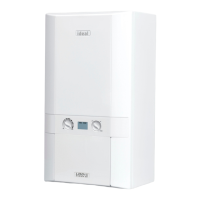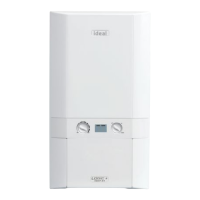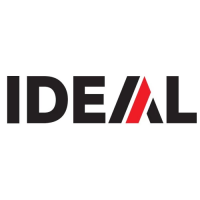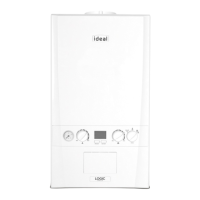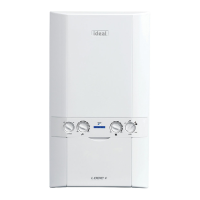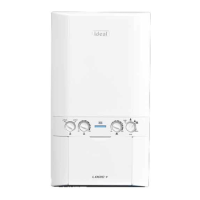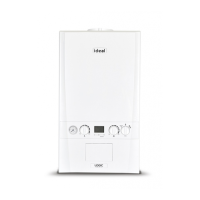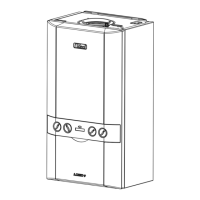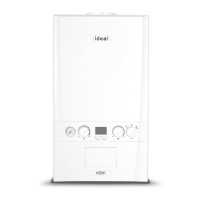5
SEALED SYSTEM REQUIREMENTS
This arrangement is useful for large systems where
radiators at the extremities are difcult to vent. This can
lead to pumping over with conventional feed and vent
arrangements.
The following conditions MUST be observed:
1. The top of the automatic air vent must be below the
cold water level.
2. The static water level (cold) must be at least 200mm
above the top of the horizontal ow pipe, tted as
shown. The vent connection MUST NOT be made
immediately off the top of the boiler as venting is made
less efcient.
3. The maximum practical length of 22mm cold feed pipe
should be used in order to reduce the effective volume
of hot system water expanding into the feed/expansion
cistern to a minimum.
b. A manual testing device.
c. Provision for connection of a discharge pipe.
The valve or discharge pipe should be positioned so
that the discharge of water or steam cannot create
a hazard to the occupants of the premises or cause
damage to electrical components and wiring.
3. Pressure Gauge
A pressure gauge covering at least the range 0-4 bar
(0-60 lb/in
2
) must be tted to the system. The gauge
should be easily seen from the lling point and should
preferably be connected at the same point as the
expansion vessel.
Notes.
a. The method of lling, relling, topping up or ushing
sealed primary hot water circuit from the mains
via a temporary hose connection is only allowed if
acceptable to the local water authority.
b. When installing the lling
device, it must be connected
as shown to fully comply with
the water regulations. This
may involve the tting of an
additional WRAS approval
isolator valve to the mains
supply.
1. General
a. The installation must comply
with the requirements of BS.
6798 and BS. 5449.
b. The installation should be
designed to work with ow
temperatures of up to 82
o
C.
c. All components of the system, including the heat
exchanger of the indirect cylinder, must be suitable
for a working pressure of 3 bar (45lb/in
2
) and
temperature of 110
o
C. Care should be taken in
making all connections so that the risk of leakage
is minimised.
2. Safety Valve
A spring loaded safety valve complying with the
relevant requirements of BS. 6759 must be tted in the
ow pipe as close to the boiler as possible and with no
intervening valve or restriction. The valve should have
the following features:
a. A non-adjustable preset lift pressure not exceeding
3bar (45lb/in
2
).
